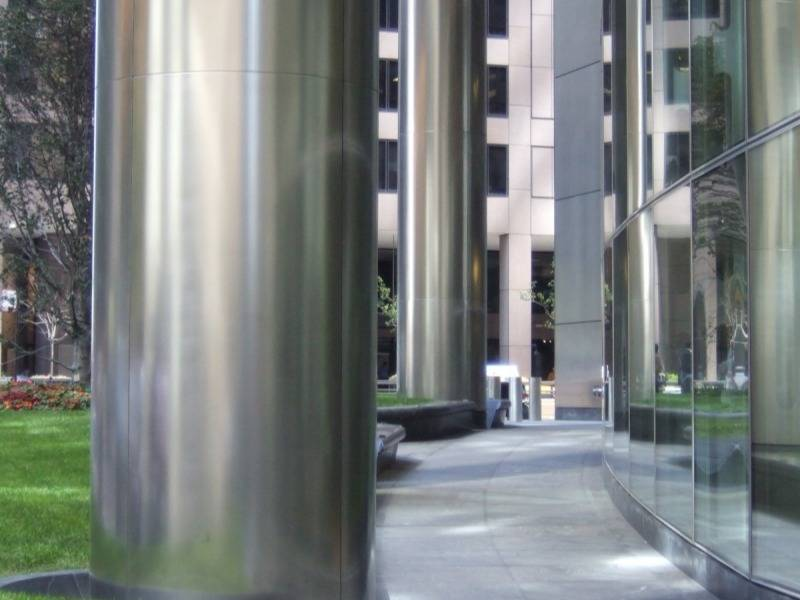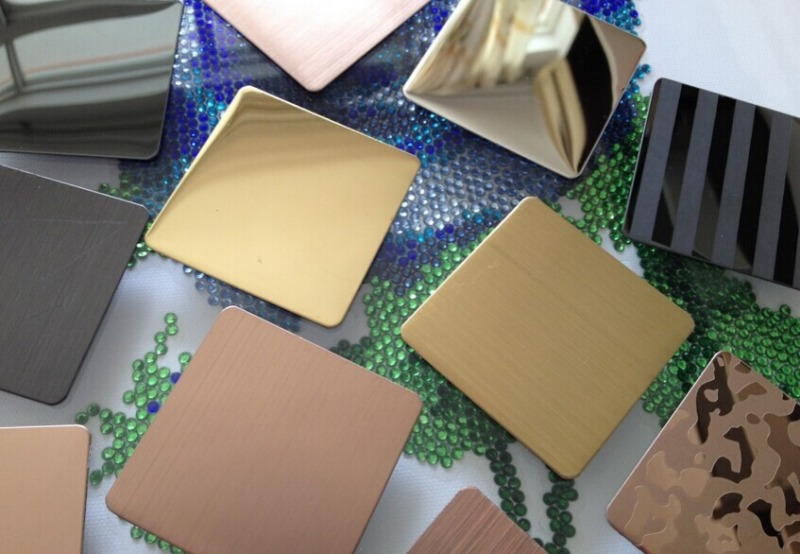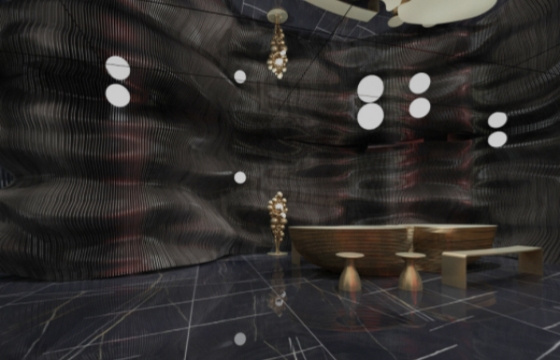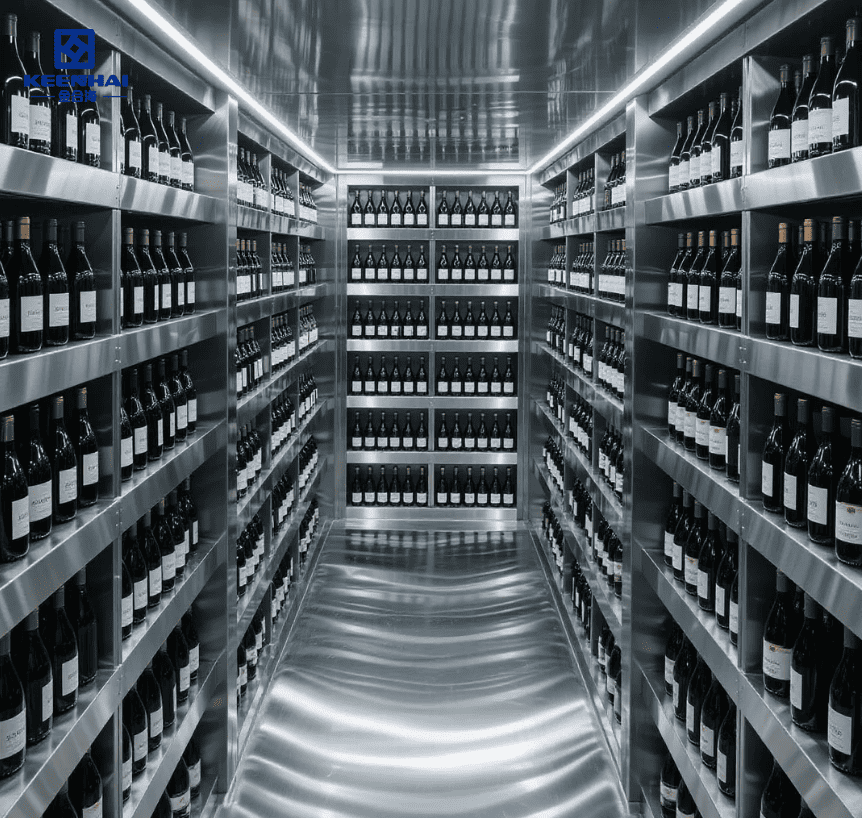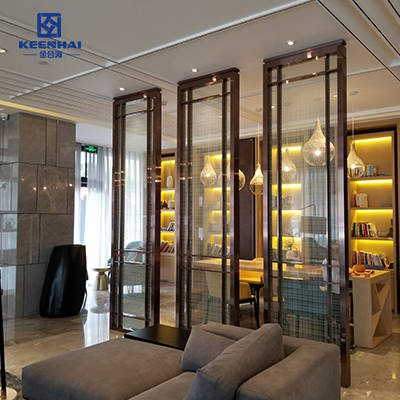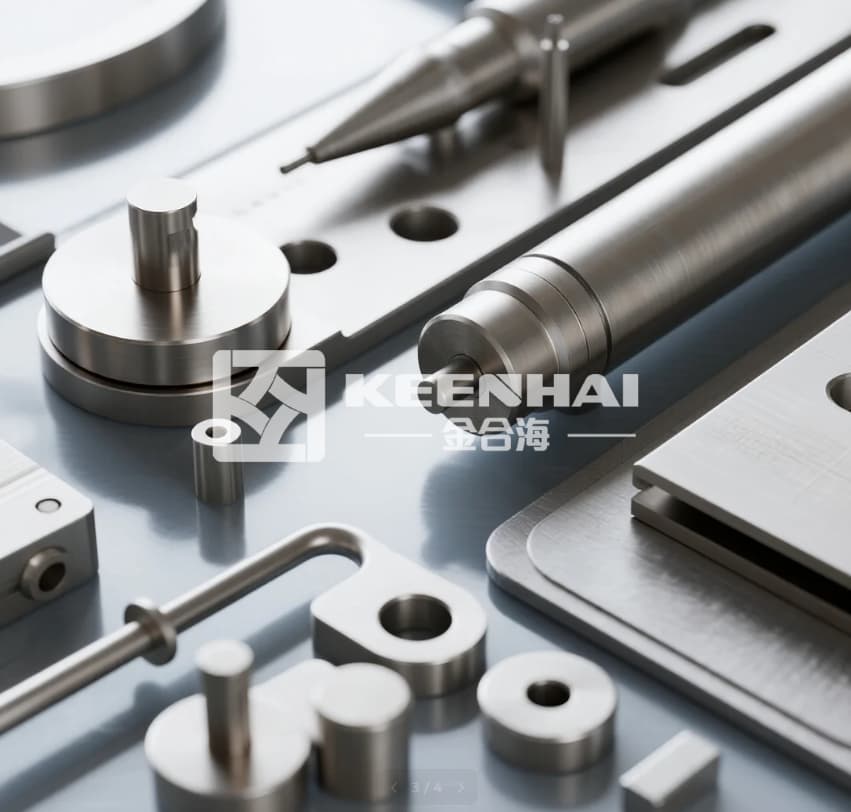Choosing between stainless steel and wood depends on priorities: stainless steel maximizes longevity and maintenance ease, while wood delivers aesthetic warmth. For modern interiors or precise aging conditions, steel wins; for traditional, cozy designs, wood shines.
1.Material Strength and Durability
1.1Structural Integrity of Stainless Steel
Stainless steel wine cellars offer exceptional structural strength, making them ideal for long-term wine storage. High-grade 304 or 316 stainless steel panels, typically 1.5–2 mm thick, resist bending, warping, and heavy load from hundreds of wine bottles. The modular design allows racks to hold up to 500 bottles, with uniform weight distribution ensuring stability.
A practical example: a premium Stainless Steel Wine Cellar installed in a Manhattan apartment uses reinforced steel frames and modular racks. The cellar supports over 300 bottles, with no sagging even after several years, while maintaining a clean, modern look.
Longevity and Wear Resistance of Wood
Wooden wine cellars bring natural warmth but require careful material selection. Oak, mahogany, or cherry with moisture content of 8–12% provides strength and prevents cracking. Over time, wood can warp or develop mold if exposed to fluctuating humidity (below 50% or above 70%) or temperature swings (below 50°F or above 75°F).
To enhance durability:
-
Use sealed or varnished wood to protect against moisture.
-
Place racks away from direct sunlight or heat sources.
-
Inspect joints and shelves every 6–12 months for early signs of wear.
1.2Resistance to Temperature and Humidity Changes
Stainless steel excels in maintaining stable environmental conditions. Its low thermal expansion (≈10–17 µm/m·K) ensures walls and racks remain dimensionally stable despite temperature swings. Wood, in contrast, expands 0.3–0.5% per 10°C temperature change, which can cause misalignment or stress on shelves.
Material Comparison Table: Stainless Steel vs Wood Wine Cellars
| Caratteristica | Acciaio inossidabile | Legna |
|---|---|---|
| Panel Thickness | 1.5–2 mm | 20–40 mm |
| Load Capacity per Rack | 80–100 kg | 50–70 kg |
| Lifespan | 20–30+ years | 10–15 years |
| Espansione termica | 10–17 µm/m·K | 0.3–0.5% per 10°C |
| Humidity Resistance | Excellent | Moderate, requires sealed wood |
| Maintenance | Wipe every 2–4 weeks | Weekly cleaning and occasional resealing |
Practical scenario: In a Chicago townhouse, a durable Stainless Steel Wine Racks setup inside a cellar allowed for climate-stable storage even during harsh winters. The racks held over 250 bottles with no distortion, while the nearby wooden shelves required regular inspections to prevent warping.
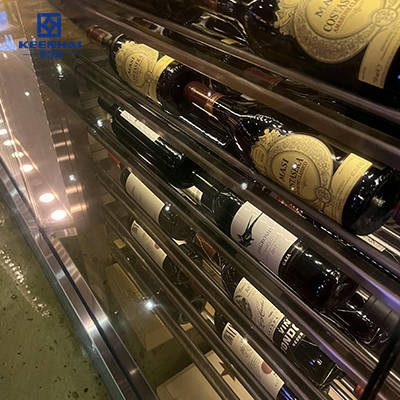
2.Maintenance and Cleaning
2.1Cleaning Requirements for Stainless Steel
A modern Stainless Steel Wine Cellar makes cleaning straightforward. Stainless steel resists stains, fingerprints, and dust, so a soft microfiber cloth and mild detergent are usually enough. For stubborn spots or sticky residues:
-
Mix warm water with a pH-neutral cleaner.
-
Wipe surfaces along the steel grain to prevent streaks.
-
Dry immediately to avoid water spots.
High-traffic wine rooms with durable Stainless Steel Wine Racks typically require cleaning every 2–4 weeks, while lightly used setups can be cleaned monthly. Stainless steel handles temperature fluctuations and humidity well, meaning no extra treatments or sealants are needed.
2.2Wood Care and Preservation
Wood wine cellars, while elegant, need consistent attention. Solid oak, mahogany, or cherry can last decades if maintained properly. Key steps:
-
Wipe surfaces weekly with a soft, slightly damp cloth.
-
Apply wood conditioner or mineral oil every 6–12 months to prevent drying or cracking.
-
Avoid placing wood racks in direct sunlight or near heating vents to prevent warping.
-
Keep humidity around 60–65%; too low dries wood, too high encourages swelling.
For homeowners using a mix of materials, combining steel racks with wooden shelving provides the charm of wood while reducing maintenance frequency for the main storage units.
2.3Resistance to Mold, Mildew, and Pests
Stainless steel wine storage naturally resists mold, mildew, and insects, making it ideal for basements or humid climates. In contrast, wood is prone to infestations if moisture isn’t controlled. Consider this practical comparison:
| Caratteristica | Acciaio inossidabile | Legna |
|---|---|---|
| Mold & Mildew Resistance | Excellent | Moderate; requires controlled humidity |
| Pest Resistance | Very High | Low to Moderate; susceptible to termites or beetles |
| Cleaning Frequency | Every 2–4 weeks | Weekly, plus annual treatments |
| Long-Term Maintenance | Minimal | Moderate to High; sealing and conditioning needed |
Example scenario: In a San Francisco loft, a stainless steel wine holder setup in a humid corner allowed wine storage without mold or insect issues for over 5 years. Meanwhile, nearby wooden racks required resealing every 1–2 years to maintain integrity.

3.Temperature Control and Wine Aging
3.1Thermal Retention of Stainless Steel vs Wood
A premium Stainless Steel Wine Cellar provides superior thermal stability. Stainless steel has a low thermal conductivity (≈16 W/m·K), which, when combined with proper insulation, maintains a consistent 55–58°F (13–14°C) environment crucial for long-term wine storage. Wooden wine cellars, depending on species and thickness, may experience temperature fluctuations of 3–5°F (1.5–2.5°C), affecting wine aging consistency.
Steel’s modular racks, such as durable Stainless Steel Wine Racks, ensure even airflow around bottles, enhancing thermal retention. Wood offers natural insulation but is more sensitive to environmental changes, requiring additional climate control.
3.2Impact on Wine Quality Over Time
Consistent temperature and humidity are critical for wine maturation. Stainless steel setups reduce risks of oxidation or premature aging. For instance:
-
Maintain humidity at 60–70% to keep corks from drying.
-
Keep vibration levels under 2 Hz to prevent sediment disruption.
-
Monitor temperature swings, keeping variation under ±1°F (0.5°C) for high-value wines.
A stainless steel wine holder in a Boston loft maintained stable humidity and temperature for over 250 bottles over 5 years, resulting in uniform aging without spoilage. Wooden wine racks in similar conditions often needed additional monitoring to prevent microclimate effects.
3.3Cooling Efficiency and Insulation Considerations
Stainless steel wine storage can integrate with advanced cooling units. Efficient designs include double-layer insulated panels (40–50 mm thickness) E low-power thermoelectric or compressor systems (100–250 W for small units). Wood wine cellars may require larger or more powerful cooling systems to compensate for heat transfer through timber.
Thermal Efficiency Comparison: Stainless Steel vs Wood
| Caratteristica | Acciaio inossidabile | Legna |
|---|---|---|
| Thermal Conductivity | 16 W/m·K | 0.13–0.16 W/m·K |
| Temperature Fluctuation | ±1°F (0.5°C) | ±3–5°F (1.5–2.5°C) |
| Humidity Stability | Excellent | Moderate; requires monitoring |
| Cooling System Efficiency | 100–250 W | 150–350 W |
| Long-Term Wine Quality | High | Moderate; risk of cork drying |
In a practical scenario, a stainless steel wine shelf installation in a New York cellar used a 200 W compressor with double-insulated panels, achieving stable temperature and humidity year-round, whereas a similar wooden setup needed a 350 W system to achieve comparable results.

4.Design and Aesthetic Appeal
4.1Modern Sleek Look of Stainless Steel
A contemporary Stainless Steel Wine Cellar instantly elevates any space with a polished, reflective finish. Stainless steel brings a minimalist, high-end look, pairing seamlessly with modern kitchens or open-concept basements. Durable Stainless Steel Wine Racks feature clean lines, modular designs, and often integrate LED lighting, creating an upscale presentation while keeping bottles organized.
Scenario: In a Manhattan loft, a stainless steel wine cellar with integrated racks and under-cabinet lighting became the centerpiece, impressing guests while ensuring easy access and durability.
4.2Natural Warmth and Charm of Wood
Wood wine storage exudes cozy, rustic warmth, enhancing traditional interiors. Oak, walnut, or cherry wood options provide rich tones and grain patterns, allowing homeowners to match cabinetry or flooring. Wood racks and shelves can be carved or inlaid with decorative motifs, offering personalized style.
Example: A California vineyard home installed wooden wine cabinets along a hallway. The combination of natural wood tones and ambient lighting highlighted both the collection and the architecture, creating an inviting and intimate feel.
4.3Customization and Decorative Options
Both stainless steel and wood offer extensive customization:
-
Stainless steel can be powder-coated, brushed, or mirrored, with integrated lighting or temperature displays.
-
Wood can be stained, engraved, or combined with metal accents to balance aesthetics and durability.
-
Modular designs allow both materials to adapt to spaces of 50–500 bottles and fit wall or freestanding layouts.
Visual & Functional Comparison
| Caratteristica | Acciaio inossidabile | Legna |
|---|---|---|
| Appearance | Sleek, modern, reflective | Warm, classic, natural grain |
| Personalizzazione | Powder coating, LED integration, modular | Stain, carving, decorative moldings |
| Maintenance | Low; easy wipe-down | Moderate; conditioning & humidity control |
| Integration | Perfect for modern kitchens, basements | Best for rustic, traditional interiors |
| Visual Impact | Minimalist and high-end | Cozy, elegant, inviting |
A stainless steel wine shelf in a Boston apartment combines glossy steel panels with floating shelves, allowing display of 150+ bottles while maintaining a modern, artistic vibe. Meanwhile, a wooden wall-mounted cabinet in a Napa home showcases wine labels against rich walnut tones, appealing to collectors seeking visual warmth.
See all sizes, finishes and custom options in our stainless steel wine cellar product collection.











